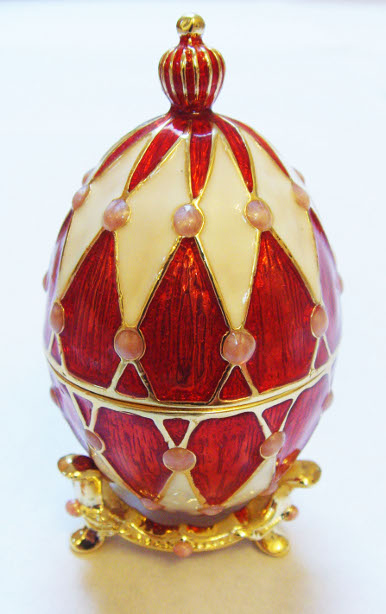The egg's ancient symbolism of fertility and rebirth predates
Christianity. Eggs have been symbolic since ancient times.
They have often played the role of representing life itself, but also
have been a sacred symbol. According to some pagan and
mythological beliefs of the past, the heavens and Earth were considered
two hemispheres that joined together to create a single egg, while the
Ancient Egyptians considered the egg as the centrepiece of the four
elements of the universe (fire, earth, water and air).
Many
centuries before Christ's birth, the exchange of eggs at the
spring Equinox in the month of March was a custom that
celebrated winter's end and the beginning of a season marked by the
blooming of nature. To obtain a good harvest, farmers would bury eggs
in farmland.
The
tradition of the gift of eggs is documented by the ancient Persians,
where simple chicken eggs were exchanged at the Advent of the spring
season. Over time, other ancient people took up the
tradition, including the Ancient Egyptians, the Greeks and the Chinese.
Often the eggs were rudimentarily decorated by hand.
 Faberge Egg
Faberge Egg
Picture
by Alison Taylor
Christian
Easter itself originates from the Jewish Passover celebration. Eggs
also form a part of the Jewish Seder meal. When the
Christian Easter began to be celebrated, the pagan spring festivities
were integrated into the holy celebration. The Christians started to
see in the egg a symbol of Christ's resurrection.
It
is however also widely accepted that the origin of Easter eggs is also
related to the custom of Lent. The Church prohibits the
consumption of eggs for this forty day period. It was thus at the end
of the fast a time to consume the eggs which had accumulated during
Lent, by cooking and eating the most recently laid eggs, and by
decorating the oldest.
The
tradition of the Easter egg was noted among Coptic Christians at the
end of the 10th Century.
The custom of exchanging decorated eggs as a gift then
further developed later in the Middle Ages. Turtle eggs,
whose shells were decorated by means of various processes, were
exchanged. Often these were real works of art.
A new
tradition also grew in the Middle Ages of creating artificial eggs made
of, or covered in, precious materials like silver, platinum or gold,
obviously destined for nobility and aristocrats. Edward I, King of
England from 1272 until 1307, ordered the creation of about 450 eggs
covered with gold to celebrate the Easter festivity.
The
tradition of giving
simple eggs as an
Easter gift spread through Germany
where colored eggs are first mentioned in the early 13th
century. In 1553 there were reports of red eggs with the
Swieconka passover meal blessing. The name Osterei in Germany emerged
for the first time in 1615 at Strasbourg. A first mention of the custom
of hiding eggs for children originates from the diary of the abbott
Jakob from the Schuttern monastery in the year 1691.
In France,
the texts which speak about the tradition of coloring eggs as an easter
gift relate to Alsace and go back to the 15th century. It was said
that Louis XIV, King of France from 1643 to 1715, would bless large
gilded egg baskets which he gave to the courtiers and his domestic
servant.
The
rich tradition of the decorated egg was taken to fine artistic highs by
the goldsmith Peter Carl Fabergé, who in 1883 received from
the Russian Tsar the task of preparing a special gift for the Tsarina
Maria; the goldsmith created the first Faberge egg for the occasion.
This was an egg of white enameled platinum containing another egg
created in gold, which in turn contained two gifts: a reproduction of
the imperial crown and a golden chick. The fame of the first Faberge
egg helped to also spread the tradition of a gift inside the egg.
The
first easter eggs made of chocolate were handmade using moulds in 19th
century Europe. Subsequently, mostly since the 20th
century chocolate eggs, enhanced by a little gift inside, have become
widespread. Whereas decades ago the preparation of classic chocolate
eggs was entrusted to confectionary craft masters, today it is a mass
market product. The preparation of Easter eggs of various sizes begins
more than a month before Easter day, similar to what also happens for
the Christmas tree in the Christmas period.
“Hunting
for eggs” is an old tradition. Certain communities organize egg hunts
for adults during Easter weekend of Easter: in a limited area
(generally a woodland), participants compete to discover the most eggs
in an hour. Lots of different types and styles of eggs are
used, enabling people to make some very interesting finds.
Peculiarly,
since 1878 the President of the USA has celebrated an annual Easter Egg
roll for children in in the gardens of the White House.
Wooden spoons are used to roll the eggs, with the winner being
the one who rolls the furthest with

|
|